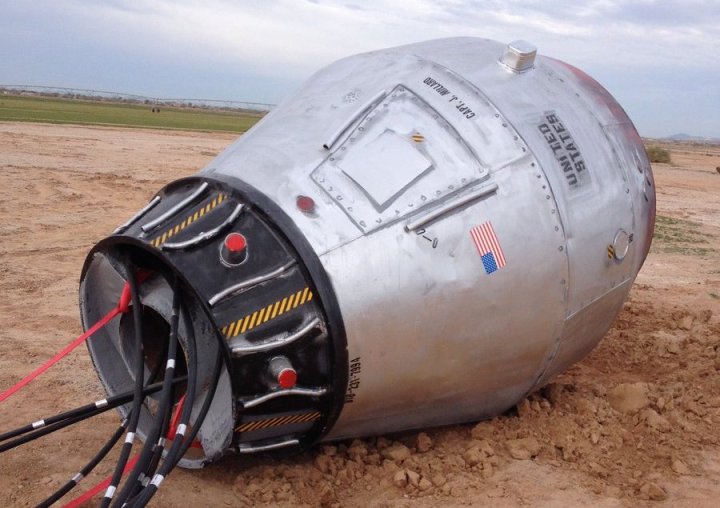
Plenty of drivers taking the desert highway this week have been caught out by the object, with a few no doubt wondering if they’d stumbled across the remnants of some secretive government project, or perhaps something altogether more sinister.
Resting by the road, the large silver object has the words “United States” and “Capt. J. Millard,” written on the side. There’s an American flag printed on it, too, and an open parachute flat on the ground close by.
A few curious folks made calls to local news outlets informing them of their mysterious discovery. At first, the Arizona Department of Public Safety (DPS) said they had no idea where it’d come from. Meanwhile, a NASA scientist who saw Monday’s TV reports about the capsule was so intrigued that he phoned officials to make sure the space agency wasn’t missing any large pieces of equipment. Like, y’know … a capsule.
So who called in the space capsule found in Casa Grande? A NASA scientist of all people! MORE PICS, DETAILS: https://t.co/qcn1m7nzil #abc15 pic.twitter.com/siNM8jqCgH
— ABC15 Arizona (@abc15) February 6, 2017
Later in the day, the mystery was solved. The object was a pretty impressive recreation of a 1960s space capsule, made by local artist Jack Millard.
The object is in fact an abandoned cement mixer that had been resting for years a little further in from the highway. Millard hauled it to the roadside before working with another artist, Ren Eide, on the transformation, USA Today reported.
When it heard about the project, the DPS responded by tweeting: “It appears an artist got creative near Casa Grande and turned a cement truck drum into a space capsule! Caused a stir on I10 this morning.”
While creating the artwork, which included attaching the all-important parachute that he acquired from a military surplus store, Millard said around 10 drivers pulled over — including some traffic cops — to find out what he was up to.
“If they enjoy it, that’s great,” the artist told USA Today, adding, “We live in such a cynical, jaded world. If it distracts them for a moment, that’s a wonderful thing.”
Editors' Recommendations
- Watch NASA’s capsule with asteroid samples hurtling to Earth
- Check out this cool NASA image of SpaceX Crew-3’s ride home
- NASA’s private Ax-1 crew gets some extra time in space
- How to watch NASA’s first space tourism launch to the ISS today
- Ax-1 space tourism mission to ISS needs good weather to launch


